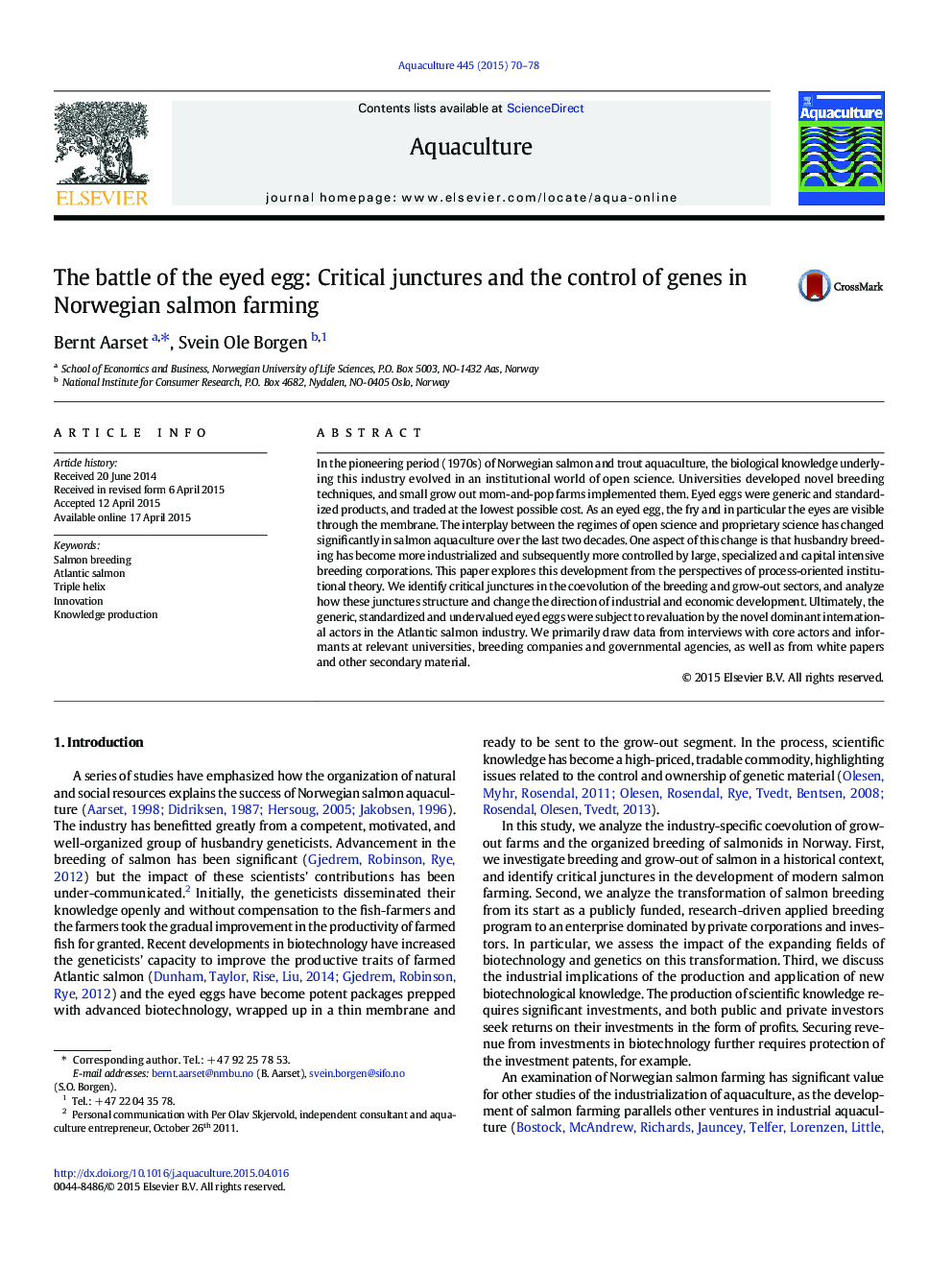| Article ID | Journal | Published Year | Pages | File Type |
|---|---|---|---|---|
| 2421567 | Aquaculture | 2015 | 9 Pages |
•We examine the coevolution of salmon farming and salmon breeding.•Critical junctures skew power equilibria.•Protective instruments evolve to restrict access to open genetic knowledge.•Increased competition over up-stream components of the value chain.
In the pioneering period (1970s) of Norwegian salmon and trout aquaculture, the biological knowledge underlying this industry evolved in an institutional world of open science. Universities developed novel breeding techniques, and small grow out mom-and-pop farms implemented them. Eyed eggs were generic and standardized products, and traded at the lowest possible cost. As an eyed egg, the fry and in particular the eyes are visible through the membrane. The interplay between the regimes of open science and proprietary science has changed significantly in salmon aquaculture over the last two decades. One aspect of this change is that husbandry breeding has become more industrialized and subsequently more controlled by large, specialized and capital intensive breeding corporations. This paper explores this development from the perspectives of process-oriented institutional theory. We identify critical junctures in the coevolution of the breeding and grow-out sectors, and analyze how these junctures structure and change the direction of industrial and economic development. Ultimately, the generic, standardized and undervalued eyed eggs were subject to revaluation by the novel dominant international actors in the Atlantic salmon industry. We primarily draw data from interviews with core actors and informants at relevant universities, breeding companies and governmental agencies, as well as from white papers and other secondary material.
